Thomas Demeester
Personalized Treatment Effect Estimation from Unstructured Data
Jul 28, 2025Abstract:Existing methods for estimating personalized treatment effects typically rely on structured covariates, limiting their applicability to unstructured data. Yet, leveraging unstructured data for causal inference has considerable application potential, for instance in healthcare, where clinical notes or medical images are abundant. To this end, we first introduce an approximate 'plug-in' method trained directly on the neural representations of unstructured data. However, when these fail to capture all confounding information, the method may be subject to confounding bias. We therefore introduce two theoretically grounded estimators that leverage structured measurements of the confounders during training, but allow estimating personalized treatment effects purely from unstructured inputs, while avoiding confounding bias. When these structured measurements are only available for a non-representative subset of the data, these estimators may suffer from sampling bias. To address this, we further introduce a regression-based correction that accounts for the non-uniform sampling, assuming the sampling mechanism is known or can be well-estimated. Our experiments on two benchmark datasets show that the plug-in method, directly trainable on large unstructured datasets, achieves strong empirical performance across all settings, despite its simplicity.
Improved Allergy Wheal Detection for the Skin Prick Automated Test Device
Jun 06, 2025Abstract:Background: The skin prick test (SPT) is the gold standard for diagnosing sensitization to inhalant allergies. The Skin Prick Automated Test (SPAT) device was designed for increased consistency in test results, and captures 32 images to be jointly used for allergy wheal detection and delineation, which leads to a diagnosis. Materials and Methods: Using SPAT data from $868$ patients with suspected inhalant allergies, we designed an automated method to detect and delineate wheals on these images. To this end, $10,416$ wheals were manually annotated by drawing detailed polygons along the edges. The unique data-modality of the SPAT device, with $32$ images taken under distinct lighting conditions, requires a custom-made approach. Our proposed method consists of two parts: a neural network component that segments the wheals on the pixel level, followed by an algorithmic and interpretable approach for detecting and delineating the wheals. Results: We evaluate the performance of our method on a hold-out validation set of $217$ patients. As a baseline we use a single conventionally lighted image per SPT as input to our method. Conclusion: Using the $32$ SPAT images under various lighting conditions offers a considerably higher accuracy than a single image in conventional, uniform light.
Efficient Text Encoders for Labor Market Analysis
May 30, 2025Abstract:Labor market analysis relies on extracting insights from job advertisements, which provide valuable yet unstructured information on job titles and corresponding skill requirements. While state-of-the-art methods for skill extraction achieve strong performance, they depend on large language models (LLMs), which are computationally expensive and slow. In this paper, we propose \textbf{ConTeXT-match}, a novel contrastive learning approach with token-level attention that is well-suited for the extreme multi-label classification task of skill classification. \textbf{ConTeXT-match} significantly improves skill extraction efficiency and performance, achieving state-of-the-art results with a lightweight bi-encoder model. To support robust evaluation, we introduce \textbf{Skill-XL}, a new benchmark with exhaustive, sentence-level skill annotations that explicitly address the redundancy in the large label space. Finally, we present \textbf{JobBERT V2}, an improved job title normalization model that leverages extracted skills to produce high-quality job title representations. Experiments demonstrate that our models are efficient, accurate, and scalable, making them ideal for large-scale, real-time labor market analysis.
Error Optimization: Overcoming Exponential Signal Decay in Deep Predictive Coding Networks
May 26, 2025Abstract:Predictive Coding (PC) offers a biologically plausible alternative to backpropagation for neural network training, yet struggles with deeper architectures. This paper identifies the root cause: an inherent signal decay problem where gradients attenuate exponentially with depth, becoming computationally negligible due to numerical precision constraints. To address this fundamental limitation, we introduce Error Optimization (EO), a novel reparameterization that preserves PC's theoretical properties while eliminating signal decay. By optimizing over prediction errors rather than states, EO enables signals to reach all layers simultaneously and without attenuation, converging orders of magnitude faster than standard PC. Experiments across multiple architectures and datasets demonstrate that EO matches backpropagation's performance even for deeper models where conventional PC struggles. Besides practical improvements, our work provides theoretical insight into PC dynamics and establishes a foundation for scaling biologically-inspired learning to deeper architectures on digital hardware and beyond.
Single- vs. Dual-Prompt Dialogue Generation with LLMs for Job Interviews in Human Resources
Feb 25, 2025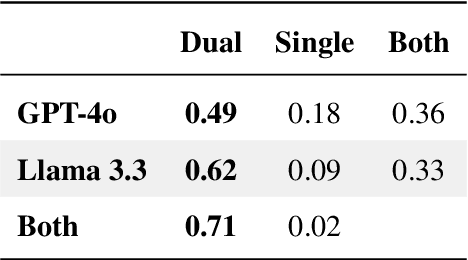
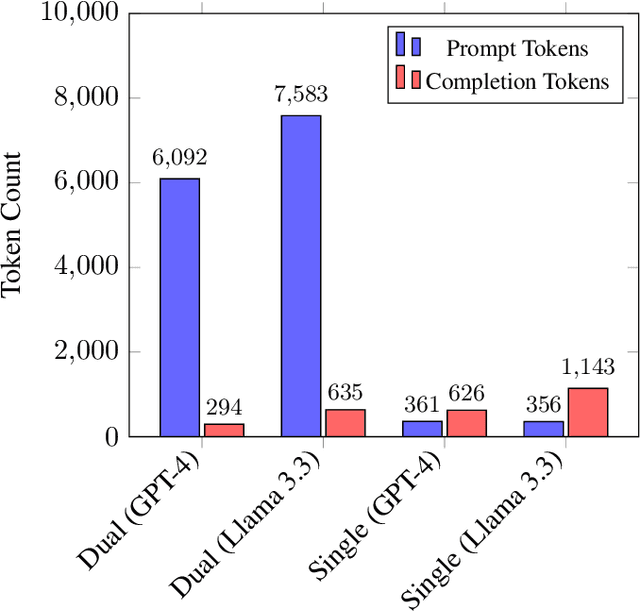
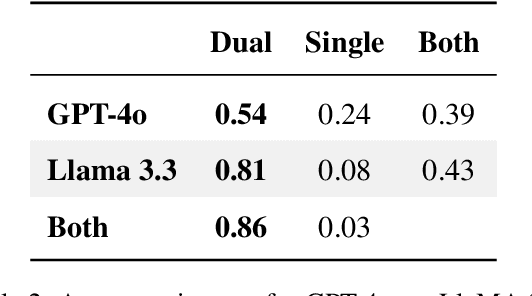
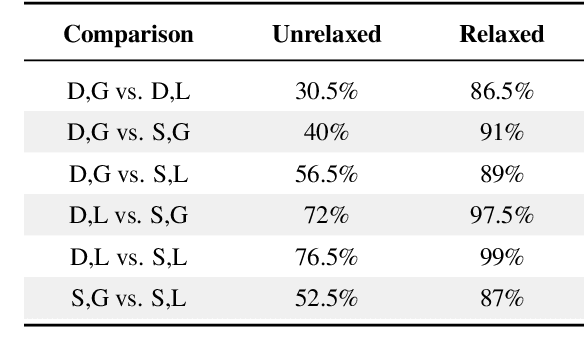
Abstract:Optimizing language models for use in conversational agents requires large quantities of example dialogues. Increasingly, these dialogues are synthetically generated by using powerful large language models (LLMs), especially in domains with challenges to obtain authentic human data. One such domain is human resources (HR). In this context, we compare two LLM-based dialogue generation methods for the use case of generating HR job interviews, and assess whether one method generates higher-quality dialogues that are more challenging to distinguish from genuine human discourse. The first method uses a single prompt to generate the complete interview dialog. The second method uses two agents that converse with each other. To evaluate dialogue quality under each method, we ask a judge LLM to determine whether AI was used for interview generation, using pairwise interview comparisons. We demonstrate that despite a sixfold increase in token cost, interviews generated with the dual-prompt method achieve a win rate up to ten times higher than those generated with the single-prompt method. This difference remains consistent regardless of whether GPT-4o or Llama 3.3 70B is used for either interview generation or judging quality.
Prior Knowledge Injection into Deep Learning Models Predicting Gene Expression from Whole Slide Images
Jan 23, 2025Abstract:Cancer diagnosis and prognosis primarily depend on clinical parameters such as age and tumor grade, and are increasingly complemented by molecular data, such as gene expression, from tumor sequencing. However, sequencing is costly and delays oncology workflows. Recent advances in Deep Learning allow to predict molecular information from morphological features within Whole Slide Images (WSIs), offering a cost-effective proxy of the molecular markers. While promising, current methods lack the robustness to fully replace direct sequencing. Here we aim to improve existing methods by introducing a model-agnostic framework that allows to inject prior knowledge on gene-gene interactions into Deep Learning architectures, thereby increasing accuracy and robustness. We design the framework to be generic and flexibly adaptable to a wide range of architectures. In a case study on breast cancer, our strategy leads to an average increase of 983 significant genes (out of 25,761) across all 18 experiments, with 14 generalizing to an increase on an independent dataset. Our findings reveal a high potential for injection of prior knowledge to increase gene expression prediction performance from WSIs across a wide range of architectures.
ChocoLlama: Lessons Learned From Teaching Llamas Dutch
Dec 10, 2024Abstract:While Large Language Models (LLMs) have shown remarkable capabilities in natural language understanding and generation, their performance often lags in lower-resource, non-English languages due to biases in the training data. In this work, we explore strategies for adapting the primarily English LLMs (Llama-2 and Llama-3) to Dutch, a language spoken by 30 million people worldwide yet often underrepresented in LLM development. We collect 104GB of Dutch text ($32$B tokens) from various sources to first apply continued pretraining using low-rank adaptation (LoRA), complemented with Dutch posttraining strategies provided by prior work. For Llama-2, we consider using (i) the tokenizer of the original model, and (ii) training a new, Dutch-specific tokenizer combined with embedding reinitialization. We evaluate our adapted models, ChocoLlama-2, both on standard benchmarks and a novel Dutch benchmark, ChocoLlama-Bench. Our results demonstrate that LoRA can effectively scale for language adaptation, and that tokenizer modification with careful weight reinitialization can improve performance. Notably, Llama-3 was released during the course of this project and, upon evaluation, demonstrated superior Dutch capabilities compared to our Dutch-adapted versions of Llama-2. We hence apply the same adaptation technique to Llama-3, using its original tokenizer. While our adaptation methods enhanced Llama-2's Dutch capabilities, we found limited gains when applying the same techniques to Llama-3. This suggests that for ever improving, multilingual foundation models, language adaptation techniques may benefit more from focusing on language-specific posttraining rather than on continued pretraining. We hope this work contributes to the broader understanding of adapting LLMs to lower-resource languages, and to the development of Dutch LLMs in particular.
Debiasing Synthetic Data Generated by Deep Generative Models
Nov 06, 2024
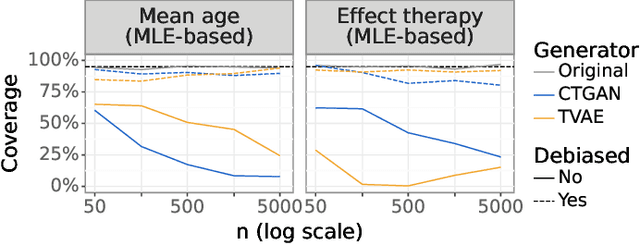
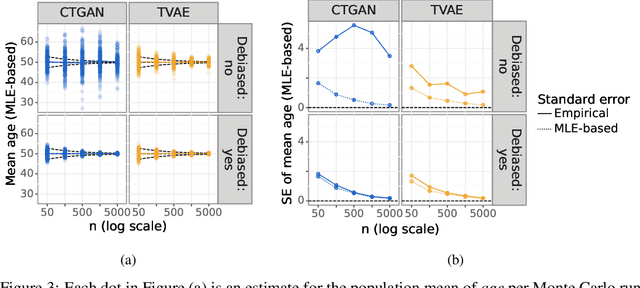

Abstract:While synthetic data hold great promise for privacy protection, their statistical analysis poses significant challenges that necessitate innovative solutions. The use of deep generative models (DGMs) for synthetic data generation is known to induce considerable bias and imprecision into synthetic data analyses, compromising their inferential utility as opposed to original data analyses. This bias and uncertainty can be substantial enough to impede statistical convergence rates, even in seemingly straightforward analyses like mean calculation. The standard errors of such estimators then exhibit slower shrinkage with sample size than the typical 1 over root-$n$ rate. This complicates fundamental calculations like p-values and confidence intervals, with no straightforward remedy currently available. In response to these challenges, we propose a new strategy that targets synthetic data created by DGMs for specific data analyses. Drawing insights from debiased and targeted machine learning, our approach accounts for biases, enhances convergence rates, and facilitates the calculation of estimators with easily approximated large sample variances. We exemplify our proposal through a simulation study on toy data and two case studies on real-world data, highlighting the importance of tailoring DGMs for targeted data analysis. This debiasing strategy contributes to advancing the reliability and applicability of synthetic data in statistical inference.
Dynamic Negative Guidance of Diffusion Models
Oct 18, 2024



Abstract:Negative Prompting (NP) is widely utilized in diffusion models, particularly in text-to-image applications, to prevent the generation of undesired features. In this paper, we show that conventional NP is limited by the assumption of a constant guidance scale, which may lead to highly suboptimal results, or even complete failure, due to the non-stationarity and state-dependence of the reverse process. Based on this analysis, we derive a principled technique called Dynamic Negative Guidance, which relies on a near-optimal time and state dependent modulation of the guidance without requiring additional training. Unlike NP, negative guidance requires estimating the posterior class probability during the denoising process, which is achieved with limited additional computational overhead by tracking the discrete Markov Chain during the generative process. We evaluate the performance of DNG class-removal on MNIST and CIFAR10, where we show that DNG leads to higher safety, preservation of class balance and image quality when compared with baseline methods. Furthermore, we show that it is possible to use DNG with Stable Diffusion to obtain more accurate and less invasive guidance than NP.
On the Biased Assessment of Expert Finding Systems
Oct 07, 2024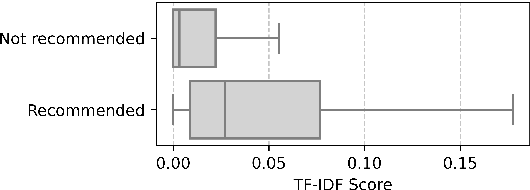

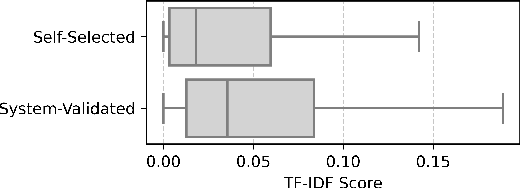
Abstract:In large organisations, identifying experts on a given topic is crucial in leveraging the internal knowledge spread across teams and departments. So-called enterprise expert retrieval systems automatically discover and structure employees' expertise based on the vast amount of heterogeneous data available about them and the work they perform. Evaluating these systems requires comprehensive ground truth expert annotations, which are hard to obtain. Therefore, the annotation process typically relies on automated recommendations of knowledge areas to validate. This case study provides an analysis of how these recommendations can impact the evaluation of expert finding systems. We demonstrate on a popular benchmark that system-validated annotations lead to overestimated performance of traditional term-based retrieval models and even invalidate comparisons with more recent neural methods. We also augment knowledge areas with synonyms to uncover a strong bias towards literal mentions of their constituent words. Finally, we propose constraints to the annotation process to prevent these biased evaluations, and show that this still allows annotation suggestions of high utility. These findings should inform benchmark creation or selection for expert finding, to guarantee meaningful comparison of methods.
 Add to Chrome
Add to Chrome Add to Firefox
Add to Firefox Add to Edge
Add to Edge